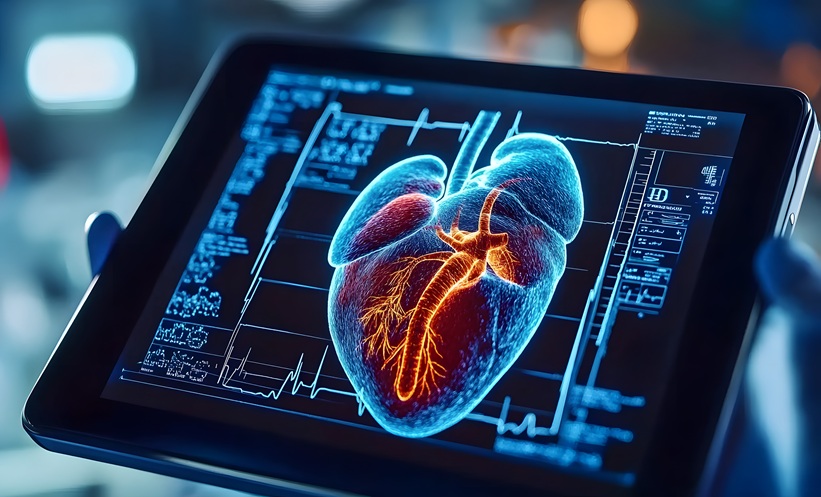Interviewees: Peter Blankestijn
Nephrologist, University Hospital Utrecht, the Netherlands
Disclosure: Blankestijn has declared no conflicts of interest.
Acknowledgements: Medical writing assistance was provided by Amanda Barrell, Brighton, UK.
Disclaimer: The opinions expressed in this article belong solely to the named interviewee.
Support: Merck supported the publication of this article.
Citation: EMJ Cardiol. 2022;10[Suppl 7]:2-5. DOI/10.33590/emjcardiol/10186442. https://doi.org/10.33590/emjcardiol/10186442.
Translations: Russian | Spanish
Interview Summary
Essential hypertension, a significant risk factor for cardiovascular diseases (CVD), kidney failure, and all-cause mortality, is largely reversible with lifestyle changes and highly efficacious medications. However, the prevalence of raised blood pressure (BP) is increasing globally. Considering its lack of symptoms, many people remain undiagnosed and unaware of the risks. In addition, a lack of perceived benefit makes adhering to pharmacological and non-pharmacological interventions challenging for patients. In this article, Peter Blankestijn from University Hospital Utrecht in the Netherlands speaks about the hidden dangers of essential hypertension, and how regular BP testing and greater public awareness could help identify undiagnosed cases and reduce risk. He also explains the challenges of adherence and how healthcare professionals can support patients to make the preventative changes that could save their lives.INTRODUCTION
Hypertension, or raised BP, accounts for 10.4 million deaths yearly, making it the world’s leading cause of mortality.1 The 2020 International Society of Hypertension (ISH) Global Hypertension Practice Guidelines defines hypertension as a systolic BP of ≥140 mmHg and/or a diastolic BP of ≥90 mmHg upon repeated examination.1
Blankestijn explained that essential or primary hypertension is common, largely symptomless, and unrelated to pre-existing medical conditions. The main risk factors, he said, are family history, obesity, diabetes, kidney failure, vascular disease, smoking, and increasing age.2 While prevalence varies from population to population, worldwide an estimated 1.28 billion adults between the ages of 30 years and 79 years have hypertension.3
The condition significantly increases the risk of CVDs, brain, kidney, and other diseases, as well as all-cause mortality and morbidity,3,4 said Blankestijn. “It has been shown numerous times in large trials that high BP is associated with CVD and that the treatment of hypertension reduces risk: there is a consensus about that,” he said.4,5 “This is the main issue that needs to be addressed and the main reason we need to treat hypertension.”
Although lifestyle changes and medications, including angiotensin-converting enzyme inhibitors and angiotensin-2 receptor blockers, are highly effective at modifying raised BP,5 hypertension prevalence is rising.1 In addition, the World Health Organization (WHO) estimates that 46% of adults with the condition remain undiagnosed, and just 21% of adults have it under control.3
UNDERDIAGNOSIS
Hypertension diagnosis is straightforward, said Blankestijn. “BP measurements can be taken in less than 30 seconds; it is a simple manoeuvre,” he said. “There is one limitation, and that is the big variability of the results. You cannot diagnose high BP based on one assessment.” Healthcare professionals should take three readings, 2 minutes apart. If the average is elevated, the patient should be asked to return in around 4 weeks to repeat the procedure. According to the ISH guidelines, he went on, the diagnosis might be made on a single visit, if BP is ≥180/110 mmHg and there is evidence of CVD.1
Despite this uncomplicated, stepwise approach, diagnosis is not without its challenges. While people in high-risk groups, such as those with diabetes, tend to be screened regularly, this is not the case across the board. “In most cases, patients do not have any symptoms, at least not in the early stages,” explained Blankestijn. “When there are no complaints, there is no apparent reason to go to a physician to get your BP checked. It means people can be walking around with high BP for years, and it is only diagnosed when there is an issue or when there are signs of CVD,” he added, saying that in his daily practice, he often saw patients with previously undiagnosed hypertension that had contributed to advanced stage CVD.
Tackling underdiagnosis requires a multi-pronged approach that includes measuring BP at every contact with primary care. “You might say that everyone who goes to their family physician, for any reason, should have their BP checked just to be on the safe side,” said Blankestijn, adding that this was even more pertinent in people with hypertension risk factors such as family history or obesity. “You could also argue that we should consider programmes by which all 50 or 60-year-olds have screening that includes BP assessment on an annual basis. In my country, the Netherlands, at least, that is certainly not an official policy.” He added that raising awareness of hypertension and its dangers among the general population, coupled with increasing access to home or ambulatory BP monitoring devices, could also play a role in helping people have more awareness of their risks.
Timely diagnosis allows for preventative interventions, helping people to avoid the significant quality of life decreases and morbidity and mortality increase associated with CVD and other diseases.6 It is also cost-effective for healthcare systems. “Treating CVDs is, in general, very costly, whereas the potential hypertension medications are off-patent and cost just cents. It has been repeatedly shown that hypertension treatment is cost-effective in the long run,” Blankestijn said.7
EFFECTIVE INTERVENTIONS
Once diagnosed, essential hypertension can be reversed and its CVD risks mitigated using non-pharmacological and pharmacological approaches.1 In most cases, the first-line intervention will be lifestyle changes, said Blankestijn. The ISH guidelines state that lifestyle modification should focus on salt restriction, increasing potassium intake through increased fruit and vegetable consumption, weight management, and reducing alcohol consumption. Increasing activity levels and smoking cessation are also advised.1
The timing of initiating pharmacological treatments very much depends on the individual patient, he went on. “If the BP is only slightly increased, you may have some time to try the lifestyle interventions, but if the BP is substantially elevated, then you might start medication sooner,” he said, adding that medication should usually be started earlier in people with signs of CVD.1
For a “substantial proportion” of patients, a single class of antihypertensive drugs is effective. However, in some people, additions of other pharmacological compounds of different classes to the regimen may be required at review. The ISH guidelines recommend aiming for complete BP control within 3 months of treatment.1 “If a family physician, after prescribing one or two medications, finds that the BP is not controlled, they will usually refer the patient to a specialist, such as myself. I will then go into the medical situation in more detail to determine whether there is an explanation for the high BP or whether there is a compliance issue,” said Blankestijn. He further stated that long-term monitoring of 6 months or so is needed in patients to check their BP stability.
ADHERENCE BARRIER
Despite the potential efficaciousness of interventions, they only work when people maintain lifestyle modifications and take their medications as prescribed.8 Yet poor adherence to treatment regimens is one of the most important reasons for uncontrolled BP, and affects up to 80% of all patients with hypertension.1 “One of the major problems is adherence,” said Blankestijn, explaining that a “considerable number” of patients referred to his resistive hypertension clinic with poor BP control have suboptimal compliance.
A perceived lack of benefit on the part of the patient is often to blame, he went on. “We have to convince patients that maintaining BP control is worth doing as a long-term investment,” he said, adding that this should be applied to lifestyle changes and medication-taking behaviour. “Losing weight or stopping smoking is, for many people, a difficult objective that is easier said than done.”
The ISH guidelines recommend physicians evaluate adherence to antihypertensive medications at each visit and before any treatment escalation. It also suggests they consider reducing polypharmacy with the use of single-pill combinations; opting for once-daily rather than multiple times per day dosing; linking adherence behaviour to daily habits; providing patients with adherence feedback; recommending home BP monitoring; providing empowerment-based counselling for self-management; using electronic adherence aids such as mobile phones or short messages services; and taking a multidisciplinary healthcare team approach that includes pharmacists to improve adherence monitoring.1
The most effective methods for the management of non-adherence require complex interventions that combine counselling, self-monitoring, reinforcements, and supervision, according to the ISH guidelines.1
Blankestijn said that, as a doctor, it was his role to advise people. “The first thing is to explain what the long-term benefits could be,” he said, adding that he found it helpful to engage people in their own BP monitoring by recommending they purchase an inexpensive home testing device. “They feel they can control the situation themselves. It is empowering,” he said, adding that the best way to support people was to keep working with them and providing positive reinforcement when they successfully achieved BP control.
CONCLUSION
Despite being reversible with lifestyle changes and medication, hypertension is still a leading cause of diseases, including CVDs, and excess morbidity and mortality. Clinicians are challenged by a lack of symptoms preventing people from presenting for diagnosis and the difficulties associated with helping patients adhere to non-pharmacological and pharmacological interventions.
To tackle underdiagnosis and undertreatment, the healthcare community must build awareness among the general population, offer BP assessment at every primary care contact, and provide greater support for patients struggling to adhere to medications and lifestyle modifications.







